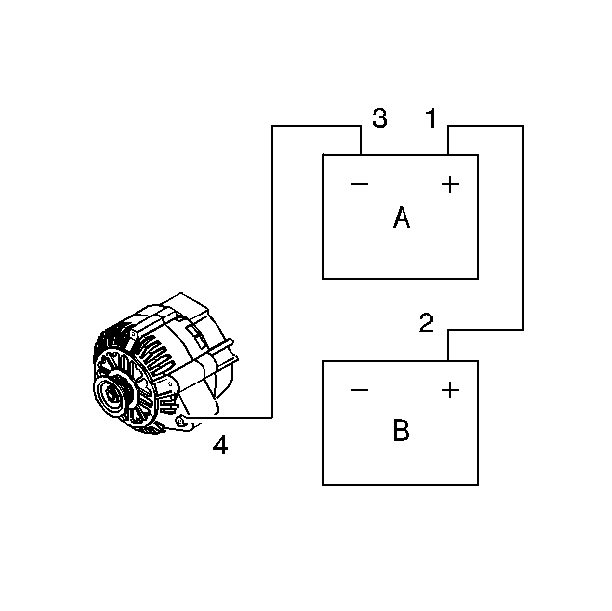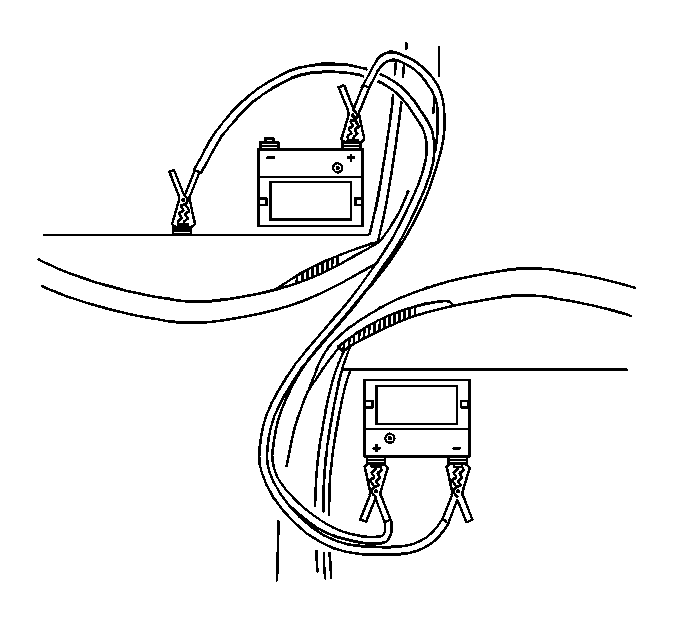The booster battery and the discharged battery should be treated carefully when using jumper cables. Follow the procedure exactly. Do not cause sparks.
Caution: Batteries produce explosive gases. Batteries contain corrosive acid.
Batteries supply levels of electrical current high enough to cause burns.
Therefore, in order to reduce the risk of personal injury while working
near a battery, observe the following guidelines:
• Always shield your eyes. • Avoid leaning over the battery whenever possible. • Do not expose the battery to open flames or sparks. • Do not allow battery acid to contact the eyes or the skin. - Flush any contacted areas with water immediately and thoroughly. - Get medical help.
Notice: Push starting the vehicle can, under some conditions, cause damage to the catalytic converter and an automatic transmission.
This vehicle has a 12 Volt, negative ground electrical system. Make sure the vehicle or equipment being used to jump start the engine is also 12 Volt, negative ground. Use of any other type of system will damage the vehicle's electrical components.- Position the vehicle with the booster (charged) battery so that the jumper cables will reach.
- Place the automatic transmission in PARK.
- Place the shift lever of a manual transmission in NEUTRAL.
- Set the park brake.
- Block the wheels.
- Turn off all electrical loads that are not needed (leave the hazard flashers ON).
- Turn OFF the ignition switch.
- Check the built-in battery hydrometer of the discharged battery. Refer to Battery Hydrometer Displays Yellow Dot .
- Attach the end of one jumper cable to the positive terminal of the booster battery (A 1).
- Attach the other end of the same cable to the positive terminal of the discharged battery (B 2). (A) Is the booster battery, (B) is the discharged battery.
- Attach one end of the remaining jumper cable to the negative terminal of the booster battery (A 3).
- The final connection (4) is made to a solid engine Ground (such as a grounding stud, the A/C compressor mounting bracket, or the generator mounting bracket), at least 450 mm (18 in) from the discharged battery (B).
- Start the engine of the vehicle that is providing the boost.
- Crank the engine of the vehicle with the discharged battery.
- The negative jumper cable must be disconnected from the battery that was boosted, first.
- Remove the other end of the negative jumper cable from the booster battery.
- Remove the positive jumper cable from the booster battery.
- Remove the positive jumper cable from the other battery.
| • | Do not let the two vehicles touch. |
| • | Make sure that the jumper cables do not have loose ends, or missing insulation. |
If the hydrometer is clear or light yellow, do not jump (charge) the battery. Replace the battery. Refer to Battery Replacement .

Important: A spark could ignite an accumulation of hydrogen gas from the discharged battery.

Do not let the cable end touch any metal (until after the other cable end is disconnected).
